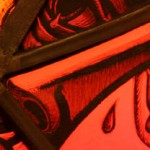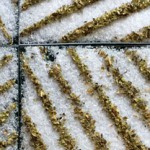In today’s society, much emphasis is placed on experience. We hear phrases like, “Well, it turns out I was horrible at volleyball, but I had a blast playing!” People write blogs about their road trip experience or what they learned while creating a piece of art (hello). A friend can ramble on and on about their shopping experience, going into extreme detail about their thought process for each purchase.
As with most things, this self-focus can be taken to the extreme and become something detrimental. If you don’t take your audience into consideration, you are going to come across as boring and self-absorbed (more on this later). But if you, like me, believe the ultimate destination is in God’s hands, then the journey can be something of great value.
A piece of artwork I’m now in the process of creating is going to be the example by which we will examine the role of the artist, and in a future post, his relationship to his audience. As mentioned, the creator’s experience is given utmost importance in today’s culture. And important it is. In Art and the Bible, Francis Schaeffer says:
[Art] doesn’t have to be put into the temple in order to be to the praise of God.
While the piece of created artwork acts as a testimony of the artist, is not the creation process the act of worship? Of course! That worshipful act will be a driving force behind the artist seeking to glorify God. Now, God can use anything to lead a person to worship and to Him, even a piece of art that has no obvious connection to Him. He can use my art in this way, whether or not my process was a worshipful one. But just as a verbal testimony given from the heart—one that contains no more truth than the testimony given by a timid soul—is quick to inspire, so is artwork that was created with the passion of a worshipful creator.
I’m currently working on a three-dimensional, mixed-media piece for an upcoming group exhibit. The artwork is based on Acts 10:43, which reads:
Of Him all the prophets bear witness that through His name everyone who believes in Him receives forgiveness of sins. (NASB)
While this is a mixed-media piece, the primary medium is wood—in the form of thousands of finger-length twig and branch pieces. My original plan was to use dowel rods. But after calculating the cost, my frugal nature led me to experiment with freely-available wood from the forest floor. That was by far the best solution for the symbolism being built into this piece.
I began by calculating the surface area of my canvas and the surface area of the bottom of one shipping box from amazon.com. I then calculated how many boxes of twigs would be needed to cover my canvas. The answer was 17. Each day I gather twigs and break them as I find them, continuing until one box is full. Today I filled my eleventh box.
Does this process take skill? Definitely not. Could it be done by a mathematician? Absolutely. But it takes time—a lot of time. This phase of the creation process, though not requiring artistic talent, has been an act of worship. As I contemplate the brokenness and deadness that each piece of wood represents, I have ample time to reflect on my own brokenness, to thank God for His forgiveness, to praise God for my own salvation and to pray for those who have rejected Him—and specifically those who will see this piece and read about its meaning.



